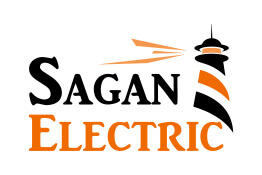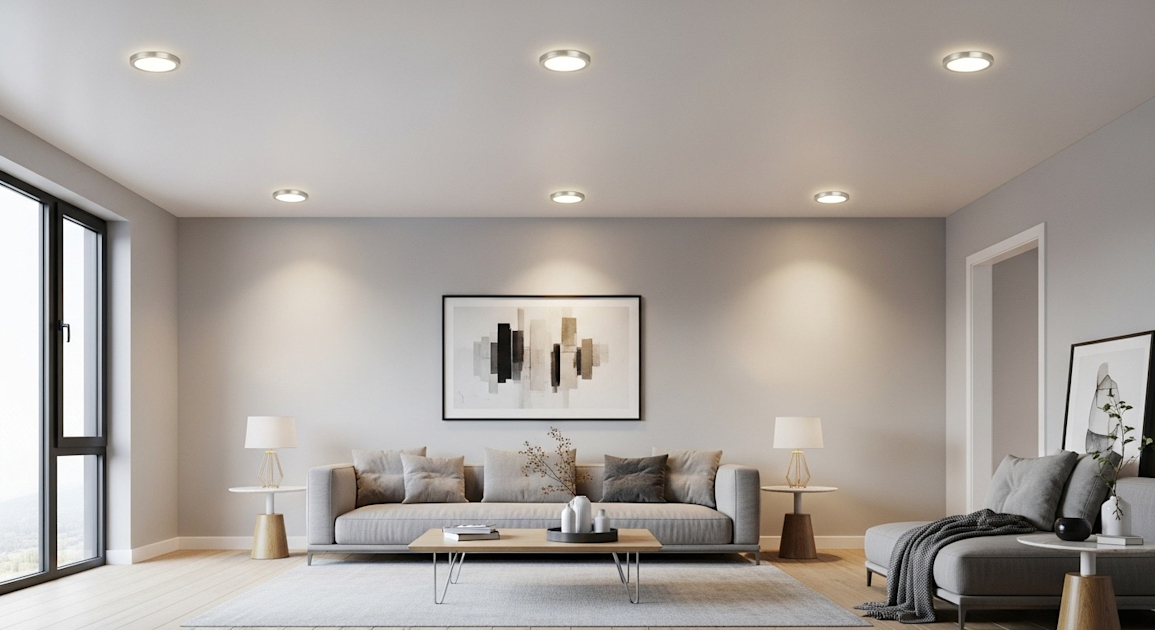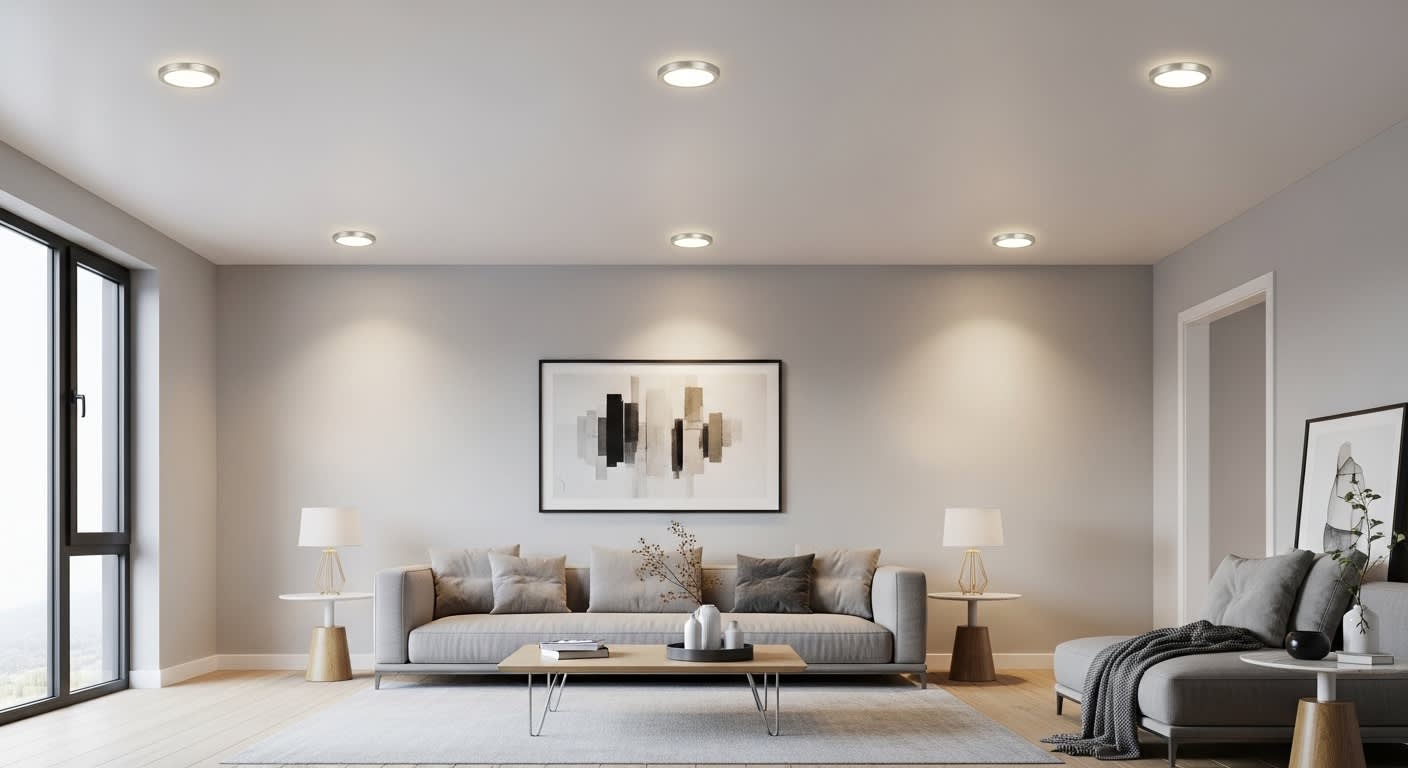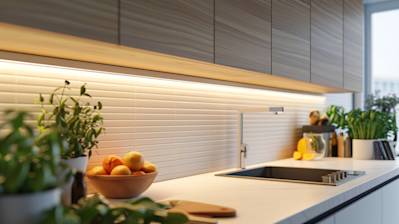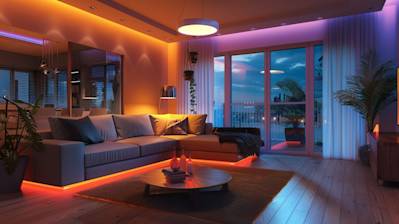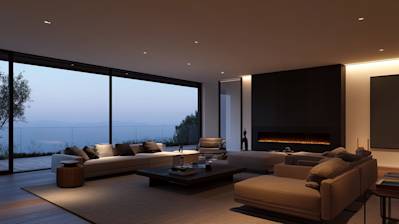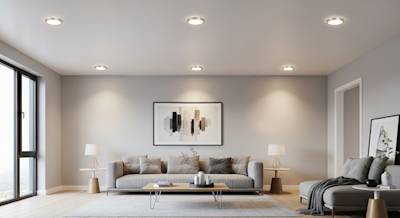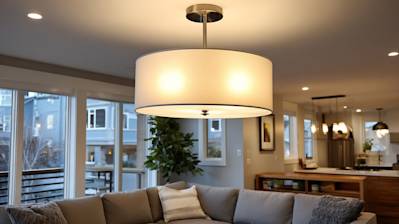Recessed lighting provides an elegant touch to any space, whether in a residential setting or a commercial area. It offers seamless lighting, as the fixtures are installed into the ceiling, thus providing a clean and polished look. This article will offer a detailed guide on the process of recessed light installation, something you can follow through whether you are a professional contractor or a DIY enthusiast.
Understanding Recessed Lighting
Mostly referred to as can lights or pot lights, recessed lights entail the placement of light fixtures inside a hollow opening in your ceiling. The resulting lighting is downwards-facing, sort of a broad floodlight or a narrow spotlight. The design of these lights grants them great versatility, with applications in ambient, accent, and task lighting. Here are some of the critical parts of recessed light configuration:
- The Housing - this is the largest part that sits above the ceiling and holds the light source in place.
- The Trim - this is the only visible part from the room and is responsible for the light's overall look and finish.
- The Bulb - the type of bulb typically depends on the trim and housing selected.
Planning Your Recessed Light Installation
A logical plan should be the starting point of your recessed light installation. You must consider the specific areas you wish to illuminate in your space. For instance, you may want to highlight a piece of art, a bookshelf, or just provide a general wash of light. Your lighting approach may even be a combination of these.
Here are the steps:
- Map out your space with a simple sketch where fixtures will go.
- Decide on the type of lighting you need, whether task, ambient, or accent.
- Measure and mark out spaces where you will install the lights, ensuring balanced spacing.
Tools You Will Need for Installation
Various tools are necessary for a successful recessed light installation process. This includes:
- Tape measure and pencil
- Wire cutter/stripper
- Drywall saw
- Drill and bits
- Screws
- Screwdriver
- Protective glasses
- Voltage tester
- Ladder
Recessed Light Installation Process
Cutting Holes for the Lighting
After marking the ceiling where the fixtures go, use a drywall saw to carve out the holes. Ensure that there are no obstructions like joists or wires in these spaces. If you encounter a stud while cutting out your marked holes, you might need to adjust the position of your light.
Wiring the Recessed Light
Before you begin, remember to turn off power from the main supply for safety purposes. Start by connecting the recessed light to the power source. With the cable from the power source directed to the light's junction box, strip the insulation off the wires (black and white) and attach them to the corresponding wires in the box. Ground wires should also be connected. Repeat the process keeping the cables aligned correctly for all lights.
Install the Lights
Take the light housing and insert it into your pre-cut hole. Ensure it sits flush with the ceiling surface. Secure the housing with screws while making sure to avoid overtightening. At this point, you’ll need to connect your light bulb to its fixture.
Add the Trim
The last step is attaching the trim. This depends on the type of trim you have, as it can either snap into place, be held by coil springs, or attach with squeeze tabs. Once the trim is in place, you can now restore power from the main supply.
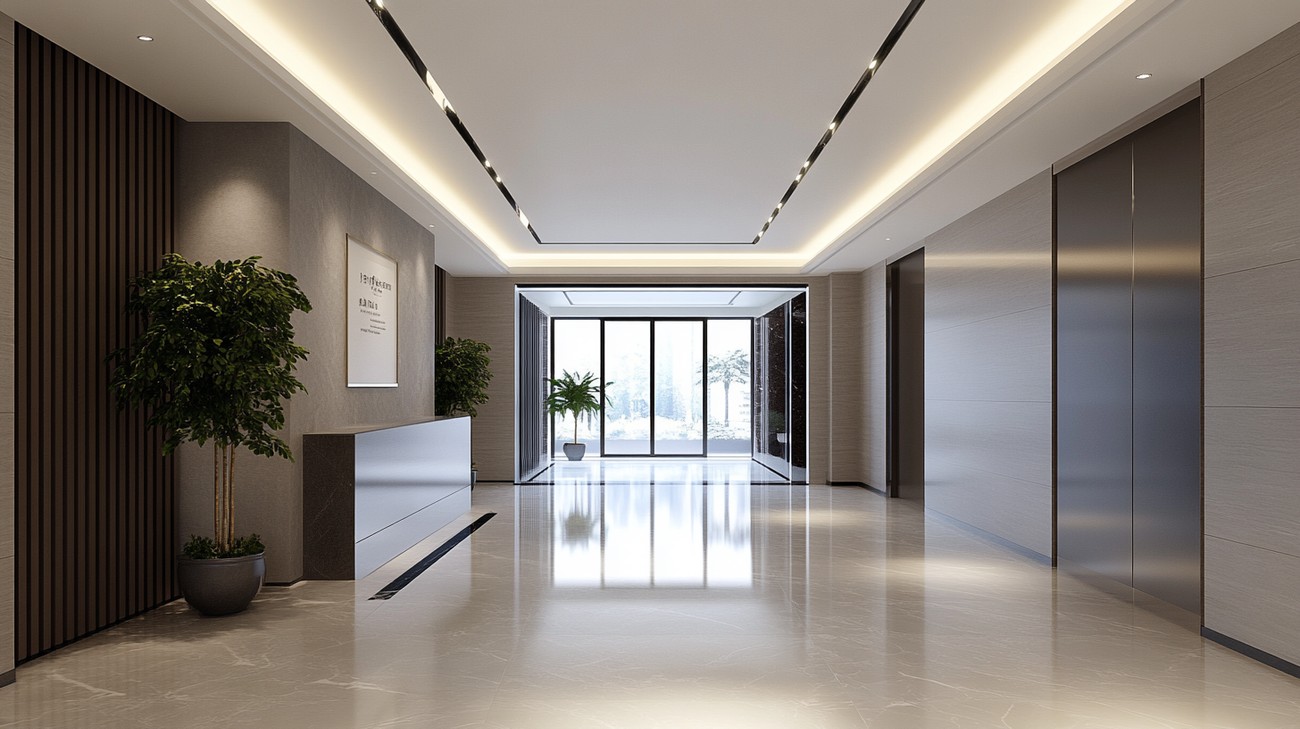
Frequently Asked Questions about Recessed Light Installation
What are the necessary tools for recessed light installation?
The primary tools needed for recessed light installation include: a wire cutter, a wire stripper, a drywall saw, a voltage tester, a drill, screws, electrical tape, a screwdriver, safety glasses, a ladder, and obviously, the recessed light fixtures.
Can I install a recessed light fixture on any ceiling?
The installation of recessed light fixtures on ceilings can depend on the area's space and structure. It is possible to install them in most ceilings, but installing in concrete can be more complex and might require professional help.
Should I turn off the power when installing recessed lights?
Yes, turning off the power is crucial during recessed light installation to protect against electric shock. It is also advisable to use a voltage tester to ensure that the area is safe and powered down before you start the procedure.
How many recessed lights should I install in a room?
The number of recessed lights you should install depends on the size of the room, the purpose of the lighting, and personal taste. A general guideline is to aim for about one light for every four to six square feet of ceiling space.
Is there a specific distance requirement between recessed lights?
Generally, recessed lights should be evenly spaced at a distance of 6 to 8 feet apart from each other, but this is not a hard and fast rule. The distance can vary depending on your room's size, shape and the intensity of light you desire.
Can recessed lights installation increase my energy bill?
Not necessarily. In fact, when properly installed and used, recessed lights can often be more energy-efficient. If you opt for LED or CFL bulbs, you are leaning towards even more energy savings.
Are there specific code requirements for recessed light installation?
Electrical codes may vary by location. Before you embark on any recessed light installation project, it's critical to check the specific electrical codes and regulations applicable in your area.
What type of bulb should I use for my recessed lights?
Most people prefer LED or CFL bulbs for their recessed lights because they're energy-efficient and have a longer lifespan. However, the choice of the bulb is a personal preference, considering factors like the color warmth and brightness level needed.
Can recessed lights cause fires?
Recessed lights that are improperly installed or that have inadequate air flow around them can overheat and potentially cause a fire. However, with careful installation, use of appropriate insulation, and regular maintenance, this risk is minimal.

Pros of Recessed Light Installation
Stylish and Contemporary Look
Recessed lighting offers a clean, streamlined look in modern homes. Because these lights are built into the ceiling, they do not protrude and hence provide a more organized and minimalist aesthetic. This function-as-decor approach can modernize any space, and it's especially cherished by homeowners who value functionality supporting design.
Multiple Uses
Recessed lighting is incredibly versatile and can be used in a variety of ways. It can be used as task lighting in a kitchen or bathroom, accent lighting to highlight specific features in a room, or as general ambient light in any room of the home. From straight down focus on a bookshelf to a kitchen counter, the usage possibilities with recessed lighting are endless.
Does Not Take Up Space
As the name implies, recessed lights are installed inside the ceiling, meaning they don’t take up any visual or physical space in a room. This makes them an excellent choice for low-ceiling spaces or rooms where you don't want the lighting fixtures to be the center of attention. It allows homeowners to maximize ceiling height and gives an illusion of more spaciousness.
Provides Focused Lighting
Recessed lighting is excellent for providing focused, directable light. The lighting fixtures are generally adjustable, allowing homeowners to direct the light where it's most needed. This makes recessed lighting a superior solution for task-oriented spaces like kitchens or workspaces.
Cons of Recessed Light Installation
Installation Can Be Difficult and Time-Consuming
One of the biggest downsides of recessed lighting is the complexity of installation. Recessed lighting usually requires more planning and effort to install compared to traditional lighting fixtures. You'll have to cut holes into your ceiling, ensure these cutouts are perfectly aligned, and handle the electrical wiring. This may need professional help and can escalate costs.
Insulation and Heat Dissipation Issues
Heat dissipation can become a problem with recessed lighting. Because these lights are embedded in the ceiling, heat from the light can seep into the ceiling structures and potentially cause damage if not properly managed. Additionally, the light housings can sometimes interfere with ceiling insulation, causing thermal inefficiency.
Costs Can Be Higher
Recessed lighting can be costlier compared to traditional fixtures. The lights themselves may cost more, and if professional installation is needed, that adds to the total price. Plus, the cost of repairs or replacements is also higher, as you might need to involve a professional to maintain or replace the fixtures.
Not Always Suitable or Allowed in Some Structures
Not all structures are suitable for recessed lighting. Homes or buildings with concrete ceilings or architectural designs that do not allow for recessed cutouts cannot install these types of lights. Moreover, in some apartments or rental properties, as per the lease/rental agreement, recessed lighting may not be allowed as it involves structural changes to the property.

Myths and Misconceptions About Recessed Light Installation
There are many myths and misconceptions surrounding the installation of recessed lights. Some of these stem from misunderstanding, while others are based on outdated information or exaggerated worst-case scenarios. This section seeks to debunk some of the common myths and misconceptions about recessed light installation.
Myth 1: Recessed Light Installation is a DIY Project
Perhaps one of the most prevalent misconceptions about recessed light installation is that it's a straightforward DIY job that anyone can undertake.
Reality:
Installing recessed lights can be a complex project that involves understanding electrical wiring, dealing with potentially dangerous power connections, and correctly securing recessed lighting fixtures in ceilings and walls, which often requires specific tools. Additionally, each type of recessed light structure has its requirements and local building codes dictate specific safety measures that ought to be followed. Consequently, while a handy homeowner may be able to handle the job, it's often best left to the professionals.
Myth 2: Any Recessed Light Can Be Installed Anywhere
People often assume that all recessed lights can be installed in any location, but this is not the case.
Reality:
Not all recessed lights are created equal, and certain fixtures are specially designed for specific areas and purposes. For instance, using a non-insulated light fixture in contact with insulation may lead to fire hazards. Thus, it is crucial to understand the specifications of your recessed light fixture and install it accordingly.
Myth 3: Old Houses Cannot Accommodate Recessed Lighting
Some people assume that because their house is older, it’s not suitable for modern lighting options like recessed lights.
Reality:
While older homes may pose some challenges, it is usually possible to install recessed lights. However, it may require more planning and work, as well as compliance with historical preservation requirements if applicable.
Myth 4: More Recessed Lights Equate to Better Lighting
A common misconception is that filling your ceiling with a large number of recessed lights will result in better lighting.
Reality:
Adding more lights doesn't necessarily bring better lighting; it can often just lead to overlit spaces and wasted energy. What counts is the effective placement of the lights based on the room's layout and uses. A professional can help determine the optimal lighting plan for a space.
Myth 5: Recessed Lights Will Weaken the Ceiling
People often believe the myth that cutting holes into the ceiling for recessed lights will weaken its structure.
Reality:
Professional installation ensures that recessed lights will not impact the structural integrity of your ceiling if installed correctly and in the appropriate places.
Myth 6: Recessed Lighting is Too Expensive
There’s a common belief that recessed lights are a luxury only the rich can afford.
Reality:
While there is an upfront cost to installing recessed lights, they can also increase the value of your home and create energy savings over time if paired with LED bulbs.
By dispelling these common myths and misconceptions about recessed lighting installation, homeowners can make informed decisions and benefit from the stylish and functional advances that recessed lights offer in interior design.
Summary
Recessed light installation can significantly enhance the atmosphere and aesthetics of your space. Be it a kitchen or a living room, these hidden lights can bring a modern touch and also help to highlight your favorite areas. They are versatile, and once you learn the drill, you can update your lighting design anytime.
Recessed light installation is not just about aesthetics, but it also counts towards energy efficiency. Using LED bulbs in your recessed lights can lower your electricity bill and reduce environmental impact. While it may seem intimidating at first, with a little practice and patience, you might even start enjoying the process of transforming your space.
It may take time to get the hang of recessed light installation but it’s an investment you won’t regret. Not only it adds value to your house on a market scale but in day-to-day life as well, enhancing your mood and productivity. Do remember to take necessary safety measures, and if faced with any issues, don't hesitate to contact a professional. It’s about having a well-lit, cozy and comfortable home at the end of the day.
About Sagan Electric
Sagan Electric is a leading electric company located in Sacramento, CA. We pride ourselves on providing top-notch, reliable, and efficient electric services to both residential and commercial customers. With a wealth of experience under our belts, we are well equipped to handle any project, big or small, ensuring all your electrical needs are professionally handled. Efficient, friendly, and committed to the highest standard of workmanship, we are the trusted name when it comes to your Sacramento electrical needs. At Sagan Electric, your satisfaction is our priority and we always go that extra mile to make sure you're content with our services.
Tags: lighting, home improvement, electrical installation,
